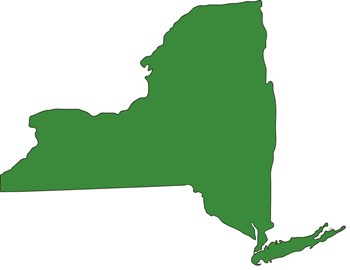
Americans today are moving toward a more well-developed awareness of their environment, and what it takes to protect and preserve earth’s natural resources. City dwellers and suburbanites alike typically recycle paper, plastic, and glass strive to conserve energy wherever possible. Some even garden and compost.
The “green movement” didn’t start with this enlightened generation however, or even a generation or two back. In one form or another, various groups and organizations have been advocating for greener, more environmentally conscious living for nearly two centuries.
Back In the Day….
The American environmental movement first began to take shape in the early 1830’s when Henry David Thoreau authored his novel, Maine Woods, calling for conservation of and respect for nature, along with federal preservation of virgin forest. By the 1860’s the United States government had already began to create parks and to set aside wild lands for public good. Yosemite became the first national park in 1872, the same year the Audubon Society was founded. The Sierra Club was formed in 1892, and the Forest Reserve Act was ratified before the century was out. President Theodore 'Teddy' Roosevelt visited Yosemite in 1903 and publicized and popularized conservation; by1916 the National Park Service was established and Americans were embracing environmental concerns.
The Rise of the Green Movement
The national parks movement lost some steam as the 20th century wore on. With two world wars and the Great Depression to contend with, environmentalism as we know it did not remain a concern for most Americans or the federal government during the first half of the 1900s. It would take a freak event in Pennsylvania in 1948 to prompt a national outcry and fuel new concerns for more personal issues like clean air.
In October of 1948, a lethal “fog” formed over the town of Donora, Pennsylvania when weather conditions trapped a haze of dangerous chemicals from American Steel & Wire and Donora Zinc Works over the town. By the time rain dispersed the fog, 20 people were dead and 7,000 were ill or otherwise affected; the ghastly event raised public awareness nationwide, and once again Americans were focused on environmentalism.
The beginning of the modern 'green' movement could be traced to the founding of the Environmental Protection Agency (EPA) in 1970. Rachel Carson’s book Silent Spring, on the dangers of pesticides, also reached an eager audience during this era, leading to numerous steps at state and federal levels to clean up the environment. New laws including the National Environmental Policy Act, the Clean Air Act, and the establishment of Earth Day, the banning of DDT, the Water Pollution Control Act, and the Endangered Species Act were put into place.
In the 21st century, Americans are even more interested in efficient living. Thanks to ongoing research and development, eco-friendly lifestyles are possible not only, in single family homes, but also in co-ops, condominiums, and other multifamily dwellings.
Improving Your Space
There is an old adage about blooming where you are planted, which loosely translates to do the best you can where you are. This is definitely true for older condos, co-ops, and multifamily properties. Local governments are generally responsible for property development, and as such they recognize the impact construction and renovation have on the surrounding environment. Laws continue to change at local, state, and federal levels to facilitate and guarantee positive changes.
As far back as July, 2007 in the New York Law Journal, real estate attorney Anthony S. Guardino cited growing support among local governmental bodies for green building concepts. Guardino, a partner at the Long Island-based law firm of Farrell Fritz, notes green building guidelines are modeled on a rating system known as Leadership in Energy and Environmental Design, or LEED. The LEED system was developed by the U.S. Green Building Council to promote green residential and commercial building construction.
When it comes to eco-friendly improvements, older multifamily dwellings, may require more creative effort to achieve environmentally sound policies and practices, but small collective efforts do equal positive changes. No one can do everything, but everyone can do something to protect the environment and to conserve resources.
Some Sustainable Solutions
“One of the simplest ways to understand how efficient your community is would be to ask how your community handles its water,” says Nicholas Ginther, a landscape architect with DW Smith Associates in Wall Township, New Jersey.
Ginther's focus is on sustainable designs and drainage solutions for community associations. “Water is one of the most destructive forces impacting the ongoing health, safety and cost of maintenance in a community,” he says. “Water in its many forms can ruin mechanical and electrical equipment, drown landscaping, cause foundation settlement, and create washouts or sinkholes. In cold weather, water can form ice slicks, crack pavements, and lift sidewalks.”
Ginther points out water damage results in the need for expensive repairs, and if the root problem is not corrected those repairs will be ongoing. “Making sure your community areas and infrastructure are functioning properly is critical in managing, correcting, and maintaining a green sustainable community.” Ginther likes to incorporate rain gardens and vegetated swales to alleviate grading and drainage problems—methods he believes are not only cost-effective but attractive as well. “When designed properly, rain gardens are relatively low maintenance, and are effective in reducing potential drainage-related issues in new or aging communities alike.”
Let the Sun Shine In
Fritz Kreiss is founder, president and CEO of Community Green Energy, LLC in Lake Geneva, Wisconsin. Kreiss also looks for innovative ways to incorporate environmentally-friendly solutions for co-ops and condominiums, primarily with solar energy. Community Green Energy is an energy service that develops and finances renewable energy and energy-efficient projects nationwide.
Community virtual solar gardens, community choice aggregation, utility scale solar development and renewable energy financing are all areas of expertise under the Community Green Energy umbrella.
“While solar has been growing by leaps and bounds across America, people living in condominiums and co-ops have largely been unable to participate,” says Kreiss. He explains that most associations have individual meters for each unit, making it cost prohibitive to provide solar for single condo units. Plus most associations’ roofs will not support an adequate array of panels. Also, maintenance and aesthetics issues come into play.
As many as 80 percent of individuals and small businesses are supportive of solar energy, but many can’t participate due to excess shade, renting rather than owning, or a roof that will not effectively support solar panels—not to mention the initial set-up fees can be prohibitive. Solar Gardens offers a viable solution, and a cost-effective alternative to traditional energy sources.
Community Virtual Solar Gardens is a nationwide program developed by Community Green Energy (CGE) that allows condo owners to buy panels in a larger central solar array to offset their condo’s electric bill. Building a large central solar array reduces the cost of going solar substantially. Depending on the state, the solar electricity generated could be a financial credit in your bank account, on your electric bill or a kWh credit. CGE also monetizes the ITC and depreciation to give associations a discount for going solar.
An added benefit for the homeowner is portability—in almost all cases you can take the benefits of ownership with you if you move. “With almost half the energy consumed stemming from heating and cooling, the initial design of any home should incorporate overhangs to block sunlight or maximize sunlight, depending on the season,” states Kreiss.
Go Green, Save Green
Sean Hirschhorn, chief operating officer for Building Green Solutions in Lakewood, New Jersey shares Kreiss’s concerns on heating and cooling cost. “Building Green Solutions works with multifamily buildings and condos to reduce fuel consumption primarily from heating and hot water,” he states. “We work with boards and property management firms to customize a BGS system to meet the needs and configurations of just about any building.”
BGS captures the in-unit temperatures in each building, as well as the key analytics from the boiler and the HVAC system. This method supplies the information needed to allow for a customized cost savings plan to improve the bottom line and increase homeowner satisfaction. BGS works with Con Ed through various subsidiaries and rebate programs resulting in improved efficiency and lower fuel consumption. “BGS has demonstrated to independent auditors overall savings while improving heating and hot water systems,” states Hirschhorn.
Building Green Solutions currently concentrates services in New York, New Jersey, Connecticut and Pennsylvania, with some customers across the greater U.S. and in Canada.
From hot water to storm water, solar gardens and/or traditional heating and cooling there are green experts with proven track records on problem solving and cost efficiency available for consultations and suggestions.
Whenever a board is faced with upgrades and repairs, a green alternative to traditional options should always be considered. Local, state and federal laws and any possible rebates should also be investigated. A board may obtain additional information from trade journals, industry professionals and trade shows as multifamily buildings move towards effective ways to reduce a property’s carbon footprint.
Anne Childers is a freelance writer and a frequent contributor to The Cooperator.






Comments
Leave a Comment